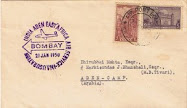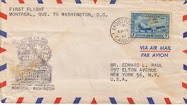BARONESS de LAROCHE
The first woman to win her fixed wing pilot's license was the self-styled Baroness de la Roche
(real name Elise Raymonde Deroche). She was taught to fly by Charles Voisin at their base at Chalons. Voisin's aircraft could only seat one person, so she operated the plane
by herself while he stood on the ground and gave instructions. After she
mastered taxiing around the airfield, she lifted off and flew 300 yards
(270 m). On 8 March 1910,
de Laroche became the first woman in the world to receive a pilot
licence when the Aero-Club of France issued her licence #36 of the International Aeronautics Federation (F.A.I.) at the age of 24.
She participated in the aviation meetings at Heliopolis, Budapest, Rouen, and Saint Petersburg. During the show in St. Petersburg, she was personally congratulated by Tsar Nicholas II who also praised her for her bravery and audacity. There, she was presented once again as "Baroness" de Laroche. Thereafter, the title became commonly used. In July 1910 de Laroche was participating in the week long airshow at Reims
in France. On 8 July her aeroplane crashed and she suffered such severe
injuries that her recovery was in doubt, but two years later she was
fit again and had returned to flying. On 25 November 1913 de Laroche won the Aero-Club of France's Femina Cup for a non-stop long-distance flight of over 4 hours duration.
de Laroche set two women's altitude records,in June 1919, one at 15,700 feet (4,800 m); and also the women's distance record, at 201 miles (323 km).
In the summer of 1919, de la Roche, who was also a talented engineer,
reported to the airfield at Le Crotoy to copilot a new aircraft in hopes
of becoming the first female test pilot. Unfortunately, the aircraft went into a dive on its landing approach and
both the Baroness and the pilot were killed.
A statue of de la Roche
stands at Le Bourget airport in France.
de Laroche can be seen on this stamp and souvenir sheet issued by France
in 2010.
Stamp issued by Gibraltar inscribed " Baroness Raymonde de Laroache, first woman with pilot's licence (8th March, 1910)"
Ferdinand Leon Delgrange
Another prominent aviator of the period was Ferdinand Leon Delgrange who was a contemporary of Farman. He bought one of the first Voisin aircraft in 1907 but did not modify it like Farman. On 23 June Delagrange set an endurance record of 18 minutes, 30 seconds at Milan. On 6 September Delagrange flew for 25km (15 miles) at Issy establishing a record having done it in 29 minutes, 53 seconds. On 17 October he established a world record (6 miles in 7 minutes, 36 seconds), and in December set a new monoplane record.
On 4th January 1910 Ferdinand Léon Delagrange, one of the greatest pilots of his time, was killed while flying at Pau. The machine was the Bleriot XI which Delagrange had used at the
Doncaster meeting, and to which he had fitted a 50 horse-power
Gnome engine, which proved too heavy. After two successful laps the strain of the engine was too much and one of the wing collapsed and the machine crashed killing Delgrange.
He was president of the Aéro-Club de France in 1908 and was awarded one of the first eight aviators certificates by the Aero Club de France on 7 January 1909.
Souvenir sheet issued by France in 2010 with a stamp showing Delgrange and sketches of the Voisin biplane.
Delgrange's biplane of 1907 can be seen on this stamp issued by
Equatorial Guinea in 1979





